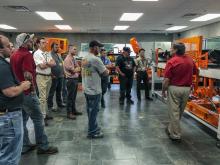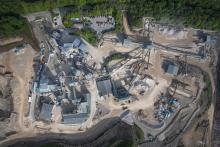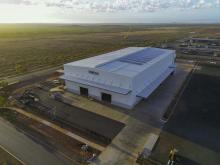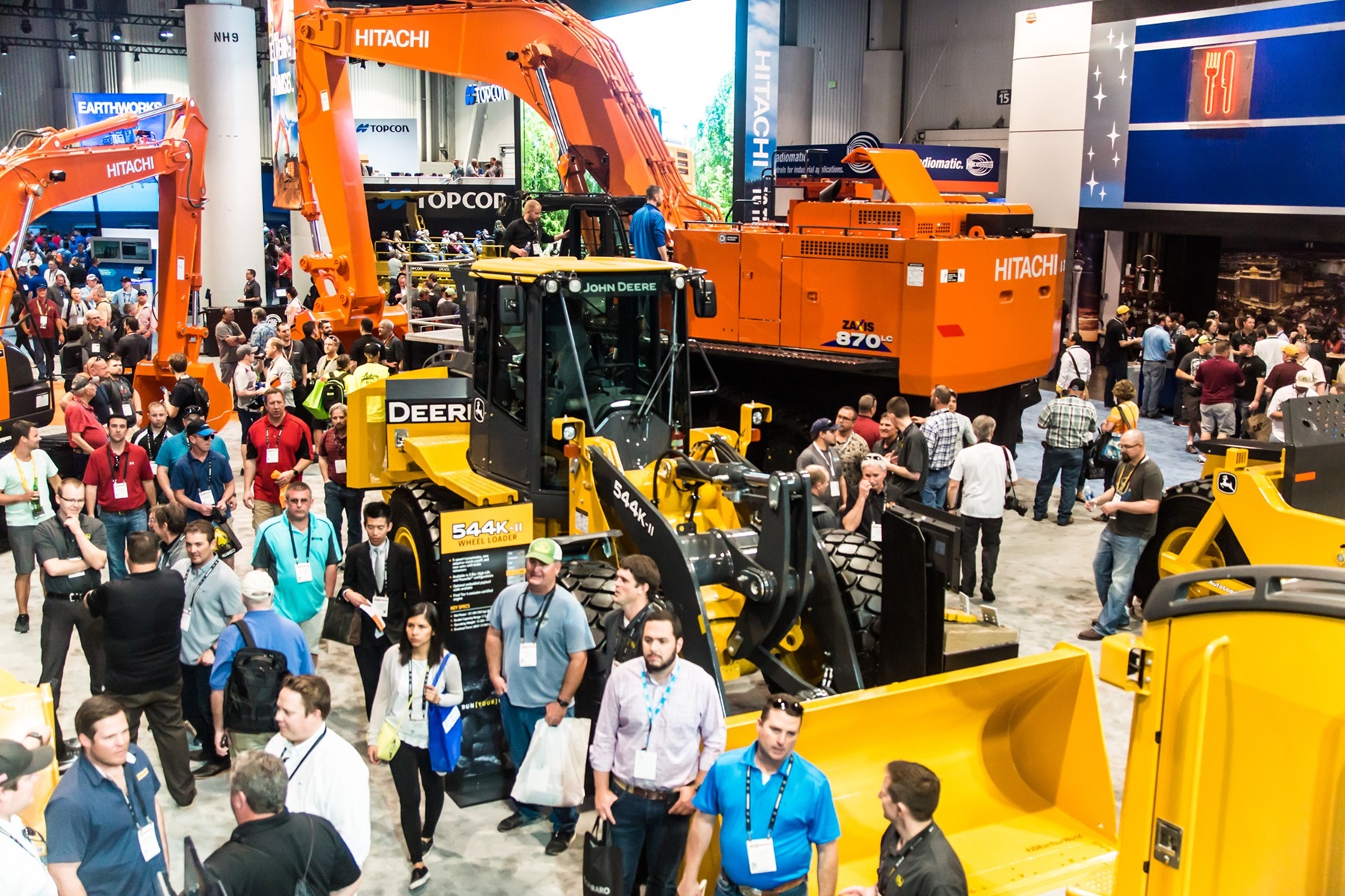
The US construction equipment industry has faced many challenges over the last few years, such as supply chain disruptions due to the COVID-19 pandemic and the wider world impact of the Russia-Ukraine war. However, there are indications that brighter times are ahead. Aggregates Business editor Guy Woodford spoke to John Somers, Association of Equipment Manufacturers (AEM) vice president for the Construction and Utility Sector, to learn more.
Like most key construction equipment markets, America is trying to solve a tricky conundrum: how to spark sales growth given an industry labour and skills shortage.
“You can break the labour shortage down into three buckets, “ says the AEM’s John Somers. "One is people working at an equipment manufacturer, whether as welders, painters, office workers or in another position. Then there are the dealer representatives, with dealer repair technicians being the biggest skilled labour shortage. And then you have the end equipment user, who has repair technicians, machine operators, foremen, and anyone else you need on a job site.

“I saw a stat a while ago that US construction was 600,000 people short. Even if half of that is in heavy construction, that’s still wild. The shortage of [dealer] repair technicians is the most disruptive. Even if you automate the equipment, you still need somebody to service and repair it.”
Commenting on the evolving skill set required by dealer service technicians, Somers says: “Last fall, I was on a panel at a conference on zero-emission equipment, primarily battery electric, and I said, ‘Let’s say this is all on the market and what happens when it needs some kind of maintenance, and the repair shop technician pops up the hood? He’s going to say, ‘Hey. There’s no oil! What is this? I know I shouldn’t touch this high-voltage wire, but I know nothing beyond that as I’m used to a diesel engine.’ Are you going to retrain all those people or not? From an AEM perspective, this is a safety topic the industry needs to address.
“I know the AED [Associated Equipment Distributors] is addressing the repair technicians shortage issue, and we have a workforce committee looking at the same issue and manufacturer knowledge transfer so that highly experienced repair technicians about to retire are passing their knowledge down to the next generation.”
So why does Somers think there are so few dealer repair technicians? “I think rather than not enough people coming into ‘the trades’, too many people are being pushed out of them. I think my generation was a prime example of this. When you talked to anyone in high school, the first question was, ‘Which college are you going to?’. If you said you’re not going to college, they would say, ‘Cool, have fun working at McDonalds the rest of your life’. Nothing in the middle was considered.
“Since then, I think we’ve overcome a lot of that but are still some way behind where we want to be. The perception of the construction industry is not accurate. We did an art contest for CONEXPO-CON/AGG last year and asked younger kids to draw pictures of equipment. An eight- or nine-year-old girl did one, and it was of a bulldozer with huge puffs of black smoke coming out of the back. I was like, ‘Never in your life have you seen that’. It was sad to me as that little person thinks construction equipment is massively polluting. You look at the highly sophisticated off-highway engines we have these days, and that’s just not happening.
“Young people who want to do stuff with technology and smartphones can do much of that in the construction industry. Unfortunately, too many think it’s all about standing in a ditch with a shovel. Some may be working in a field on a job site, but they’re analysing and managing the site and daily production data on an iPad. You can then get into 3D site modelling and other interesting technology areas.”

Somers is speaking to me after the AEM’s Q1 Equipment Market Outlook Webinar in early February 2024. The webinar heard how supply chain disruption in the wake of the COVID-19 pandemic and the Russia-Ukraine war suppressed US construction machinery demand in 2023, with the market set to remain “sluggish” regarding growth in 2024.
On a more positive note, inflation is no longer rising, and pricing pressure is easing. As such, Somers and other influential industry analysts believe the mid-to-long-term outlook for the American construction machinery sector is more positive.
“I was with several [AEM] members at the ARA [American Rental Association] trade show [New Orleans 18-21 February 2024], and we were discussing supply chain issues. If you go back to 2021 and 2022, that was the peak of supply chain disruption. There were a lot of reasons why things were bad, but no rhyme or reason with what the shortage would be one week to the next: one Monday, you don’t have wire harnesses; the next Monday, you have no cabs. Machines would come down the line and get to a certain point, and equipment manufacturers said: ‘Well, we don’t have this part this week, but we’ll probably have it next week. Do we finish the rest of this model without and add the missing part later or take the missing part from something else?’. That situation is pretty much worked out now.”
Somers says that US construction demand varies depending on which AEM members you talk to. He notes that the current market follows a “supply-chain scramble” and the “crazy high” two years ago. Off-Highway Research, a leading business market intelligence company, reported record US construction equipment sales of 318,855 units in 2022.
“Putting aside the impact of the US presidential election, the other factor that could affect equipment demand later this year and early next year is that most of the funds that have gone into buying new construction equipment are from residual projects,” says Somers. "These are projects that were planned in 2019, 2020, or 2021. The IIJA [Infrastructure Investment and Jobs Act] money is just starting to hit the industry.”
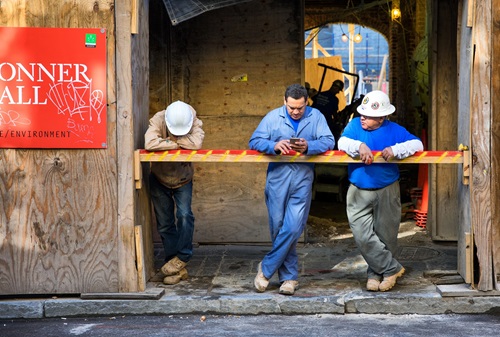
The IIJA, also known as the Bipartisan Infrastructure Law (BIL), was signed into law by President Biden on November 15, 2021. It authorises $1.2 trillion for transportation and infrastructure spending, with $550 billion of those funds going toward "new" investments and programmes.
“Will the IIJA spending [on new construction equipment] pick up as the residual project spending finishes? In a perfect world, it would. But no one knows whether or not there will be a demand lull,” continues Somers. “It won’t be the same regarding equipment demand for all infrastructure. I was on a call involving a couple of people in the fibre broadband industry, and they said, ‘We’ve been going strong [in this area] for five years, and there’s no stopping us’. That industry will stay strong.”
Asked what impact the US presidential election scheduled for Tuesday, 5 November 2024, will have on construction equipment demand, Somers says: “The current administration has been very pro alternative power generation, battery electric cars and charging infrastructure. If it switches over, are we too far down that path for that to be cut off? I think so. Many of our [AEM construction member] manufacturers are down the path of electric machines.”
Commenting on the impact of continuing high US interest rates on the construction equipment market, Somers adds: “If interest rates don’t come down, home construction will stay down. How much impact there will be on the wider construction market and equipment demand, I don’t know.”
How much emphasis are AEM construction equipment members placing on automation? “The impact of COVID-19, workforce-related and machine availability-related, and the uncertainty it created, especially at the start of the pandemic, drove a lot of technology adoption. It pushed many companies to make the necessary investments. These technologies enable [equipment manufacturer] customers to minimise equipment downtime and create efficiencies with machine utilisation data.
“From a contractors’ perspective, new technologies are being embraced. It’s not a case of explaining to some end users why they need to adopt them. Some of that is due to generational change, as the boomer generation retires and younger people are promoted to more senior leadership roles. Many contractors are now working out how to take these technologies to the next level, where they can really see the benefits of it.

“On automation’s impact on the workforce, there’s a reason to automate machine functions for accuracy and to assist an inexperienced operator. Two reasons to remove operators from machines are for safety and because you don’t have anyone to sit in a cab and operate it. The lack of people to do the work will drive that.
“I think automation in construction will go faster than some might think. The problem is that the industry’s projects are all different, and in many cases, they don’t take place in a controlled environment like a farm. Working in a quarry where you can automate the haul trucks [doing repetitive tasks] is where we’ll see automation move faster. That’s already happening, too.”
Somers believes that next-generation construction machines will introduce many more safety features. “A couple of companies at CONEXPO-CON/AGG 2023 released sensor-based object detection alarms on their machines. As the cost of sensors reduces and the time to re-engineer them into machines is found, these safety features will become more common and link to personnel safety on a job site.”
Somers describes the approach of AEM construction equipment members to sustainability: “They are concerned with two things: the sustainability of all the components going into their machines and the sustainability of the equipment in use. I think the first one shades it as a priority as manufacturers’ supply chains are more heavily regulated. From the contractors’ perspective, they care less about machines being made sustainably but are way more concerned about their carbon output on a job site and the level of fuel burn. During COVID-19, diesel went from something like $2 to $6 a gallon and many contractors have continued to emphasise using less fuel from a cost perspective.”
Asked if there are any signs that the US will adopt more of a strict European-style tender stipulation approach to industry sustainability, Somers says: “I think California are the ones who would lead on this. They are discussing a Tier 5 diesel [engine emissions] regulation and also driving towards zero tailpipe emissions in some cases.”

Somers stresses that construction equipment buyers and renters are increasingly looking at the level and reliability of servicing and maintenance support they can get for their equipment fleets. “This links back to the availability of repair technicians. Being able to have your equipment serviced is a big deal.
“New companies have entered the [US] market, and longtime players have entered new [construction equipment] categories; a manufacturer now makes a skid steer, for example, when they didn’t before. I don’t know why this is happening. Part of it might be, ‘We are growing, and we can make this, so let’s just make it’. Some established players that supply customers with certain machines see it as worth a shot to try and supply them with a fuller equipment range.
“At the recent ARA event, there were several new product launches showcasing machines of different sizes or styles that certain manufacturers already make. However, quite a few companies, such as those that make large excavators, were also unveiling compact ones.”

Finally, how does Somers see the US construction equipment market’s approach to alternative power-based machines? “A lot is happening in this area, and we saw much of it last year at CONEXPO-CON/AGG. The industry believes there won’t be one power that fits all equipment. There’ll be a place for battery-electric, hydrogen fuel cell, hydrogen combustion engine and biodiesel-powered models. I think power requirements for an application rather than regulation will drive that. The construction equipment industry is trying to get ahead on this while knowing that the infrastructure isn’t there. There’s also a really specific use case for using alternative power machines, such as working indoors in the basement of an old building. You don’t want fumes in that space, so use a battery-electric powered machine. The biggest problem for users of alternative-powered equipment is they want to be sure the equipment can run all day. They also want to know if the residual value of a battery-electric model is more, less or the same as that of a diesel-powered machine.
“There are applications where alternative power machines make sense and others where they do not. It is a very interesting space to watch. We have been working hard to educate policymakers, AEM members, and end users on issues linked to alternative power use, including the efforts to make the energy draw required by components in battery-electric machines more efficient to make the battery last longer.”
The Association of Equipment Manufacturers (AEM) is a North American-based trade association representing off-road equipment manufacturers and suppliers, with more than 1,000 companies and more than 200 product lines in the agriculture and construction-related industry sectors worldwide. AEM is based in Milwaukee, Wisconsin.

